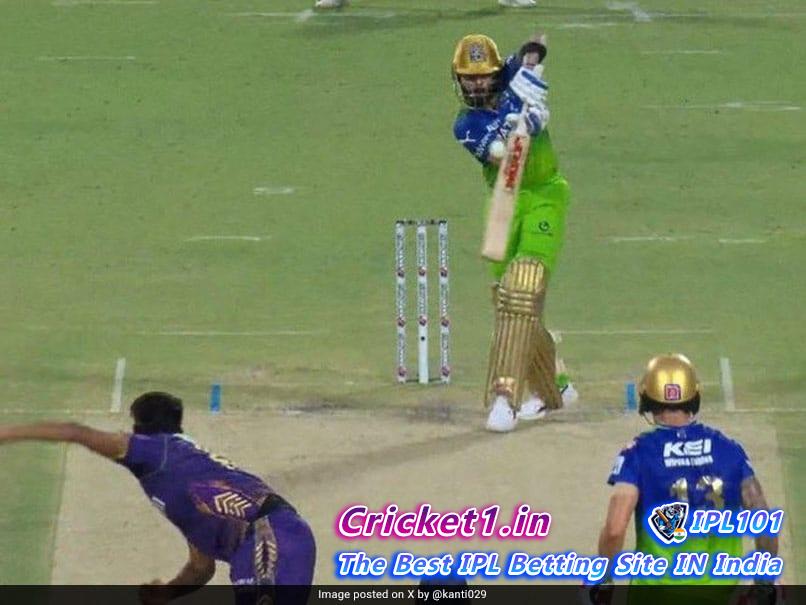
A recent IPL match featuring Royal Challengers Bengaluru (RCB) and Kolkata Knight Riders (KKR) has stirred much debate among cricket fans and experts alike, particularly surrounding the dismissal of cricket luminary Virat Kohli. The incident occurred when KKR’s pacer Harshit Rana delivered a controversial full-toss to Kohli, which he hit directly back to the bowler. Despite appearing to be a possible no-ball due to its height, the on-field decision ruled Kohli out, a verdict upheld even after a detailed video review.
Understanding the Rule: According to ICC rule 41.7 concerning the ‘Bowling of dangerous and unfair non-pitching deliveries,’ a ball is considered a no-ball if it reaches the batsman at the popping crease, without pitching, above waist height. However, in Kohli’s scenario, this criterion was not met. Technological evaluations showed that while Kohli’s waist height was nearly 1.04 meters when standing upright, the point of impact when he hit the ball from outside his crease was significantly lower, approximately 0.92 meters. This finding was pivotal as it demonstrated that, had Kohli remained within his crease, the ball would not have met the conditions for a no-ball.
The Aftermath and the Debate: The decision sparked an immediate outcry on social media and among RCB supporters, who felt the delivery was dangerously high and should have been called a no-ball regardless of Kohli’s advance down the wicket. The controversy emphasizes ongoing discussions about player safety and the interpretation of rules in dynamic play situations.
RCB team captain, Faf du Plessis, expressed his concerns post-match, pointing out the ambiguity and the split-second judgments players must make. “Obviously, the rules are the rules,” he noted, underscoring the challenge faced by players in interpreting such deliveries during intense moments of the game.
This incident has not only reignited debates about the fairness and clarity of cricket regulations but also highlighted the critical role of technology in umpiring decisions. While technology aims to bring more accuracy to decisions, its application in dynamic scenarios often complicates judgments that influence the outcome of the game.
As the IPL continues, the spotlight remains on the enforcement and interpretation of rules, particularly those affecting the safety and fairness of the play. The event has urged many to call for a reevaluation of how rules are applied in real-time and under pressure, ensuring the spirit of the game is maintained without compromising the safety of the players.
For ongoing updates on IPL 2024, follow NDTV Sports on social media or download their dedicated cricket app, where you can also check the latest IPL schedules and the points table. As the dialogue around Kohli’s dismissal continues, it is a stark reminder of the ever-evolving landscape of professional sports where rules, technology, and human decisions intersect, shaping the future of the game.

